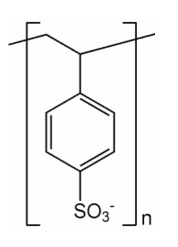


 علم الكيمياء
علم الكيمياء 
 الكيمياء التحليلية
الكيمياء التحليلية 
 الكيمياء الحياتية
الكيمياء الحياتية 
 الكيمياء العضوية
الكيمياء العضوية 
 الكيمياء الفيزيائية
الكيمياء الفيزيائية
 الكيمياء اللاعضوية
الكيمياء اللاعضوية 
 مواضيع اخرى في الكيمياء
مواضيع اخرى في الكيمياء
 الكيمياء الصناعية
الكيمياء الصناعية |
Read More
Date: 16-12-2019
Date: 13-12-2019
Date: 16-12-2019
|
When a protein is to be analysed, it is first heated with acid to hydrolyse all the peptide bonds. When such a mixture of amino acids is to be purified and estimated quantitatively, ion-exchange chromatography is the technique of choice. Fully automated amino acid analyzers are now available, which are equipped with a solvent pump to deliver the required buffer(s) in a programmed manner. There is a column, filled with Dowex 50 resin (Fig 1.). This solid support is made up of polymeric beads. Chemically speaking they are polymers bearing arylsulfonic acid groups. The cation exchange resin helps in the separation of amino acids. In a typical run (Fig 1.2), the eluent is a buffer. The pH value of the buffer could be varied as step elution or as gradient elution. The chromatogram shown in Fig 1.2 is a chromatogram run with gradient elution technique, using ninhydrin as the post column treatment. The detector is a UV detector scanning the wavelengths 570 nm and 440 nm.

Fig 1.: A Cation Rasin like Dowex 50 is a polymeric bead bearing aryl sulfonic acid groups

Fig 1.2: Some typical chromatograms from an amino acid analyzer



|
|
|
|
دراسة يابانية لتقليل مخاطر أمراض المواليد منخفضي الوزن
|
|
|
|
|
|
|
اكتشاف أكبر مرجان في العالم قبالة سواحل جزر سليمان
|
|
|
|
|
|
|
اتحاد كليات الطب الملكية البريطانية يشيد بالمستوى العلمي لطلبة جامعة العميد وبيئتها التعليمية
|
|
|